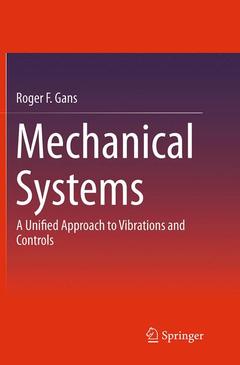Description
Mechanical Systems, Softcover reprint of the original 1st ed. 2015
A Unified Approach to Vibrations and Controls
Author: Gans Roger F.
Language: English
Subjects for Mechanical Systems:
Approximative price 69.00 €
In Print (Delivery period: 15 days).
Add to cartPublication date: 09-2016
Support: Print on demand
Approximative price 79.11 €
In Print (Delivery period: 15 days).
Add to cartPublication date: 09-2014
437 p. · 15.5x23.5 cm · Hardback
Description
/li>Contents
/li>Biography
/li>Comment
/li>
Overview with Some Definitions and Mathematics.- One Degree of Freedom Systems.- More Than One Degree of Freedom Systems and the Euler-Lagrange Process.- Modal Analysis.- Vibration Measurement.- State Space, Equilibrium, Linearization, and Stability.- Classical Control.- The Basics of State Space Control.- Observers.- Tracking Control.- Introduction to Nonlinear Control.
Presents a unified approach to vibrations and controls, including an excellent diagram that simultaneously discusses embedding classical vibrations (mechanical systems) in a discussion of models, inverse models and open and closed loop control
Makes a careful connection of the Lagrangian approach and state space
Introduces the reader to a formal approach to linearization, something that every engineering student should know, but which is not included in many programs or undergraduate textbooks
Emphasizes Includes simulations of nonlinear systems compared with the usual linear approximations
Features a concise discussion of DC motors, affording a more realistic approach to controls
Includes a final chapter address feedback linearization generally, and in the context of robots with purely revolute joints
Includes supplementary material: sn.pub/extras
These books may interest you

Engineering Vibrations 196.56 €



